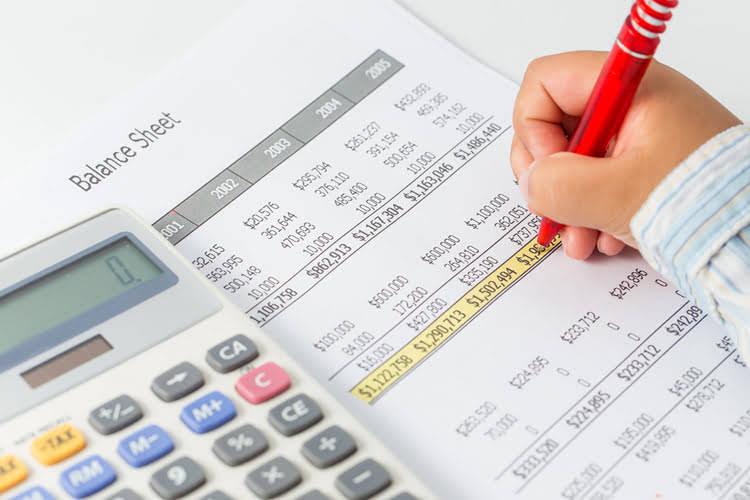
In this case, the company’s first interest payment is to be made on March 1. However, the company still needs to accrue interest expenses for the months of December, January, and February. The entry for insurance reflects six months’ expenses, which have been paid, but coverage of only one month could have been used by June end. Mr. Jeff, an owner of a small furniture manufacturing company named Azon, offers A-Z varieties of furniture. The company took a loan of $100,000 for one year from its bank on May 1, 2018, @ 10% PA, for which interest payments have to be made at the end of every quarter.

What Are the Types of Adjusting Journal Entries?

These entries are required to ensure that all income and expenses are accurately recorded in the correct period, reflecting the accurate financial position of the business. Adjusting entries, also called adjusting journal entries, are journal entries made at the end of a period to correct accounts before the financial statements are prepared. Adjusting entries are most commonly used in accordance with the matching principle to match revenue and expenses in the period in which they occur.
What are Adjusting Journal Entries?
Usually, this mistake isn’t found until you do your bank reconciliation. When cash is involved in the wrong accounting errors entry, it can be rectified, bypassing the reversal of the first entry and then recording the correct entry. The same can be rectified by bypassing the single entry to consider a reversal of the wrong entry and correct entry.
Days Payable Outstanding: Silent Indicator of Your Financial Health
Accounting errors can occur in double entry bookkeeping for a number of reasons. Accounting errors are not the same as fraud, errors happen unintentionally, whereas fraud is a deliberate and intentional attempt to falsify the bookkeeping entries. Unearned revenues are also recorded because these consist of income received from customers, but no goods or services have been provided to them.
Rectification of Errors: Definition

In other words, we are dividing income and expenses into the amounts that were used in the current period and deferring the amounts that are going to be used in future periods. X Company’s payroll expense is $1,500 per week; they Bookkeeping for Chiropractors pay salaries every two weeks. Assume that December 31 falls at the end of the week, and in the middle of the pay period. The payroll expense for the two week period needs to be split between two years, with $1,500 in year 1 and $1,500 in year 2. For example, a company that has a fiscal year ending Dec. 31 takes out a loan from the bank on Dec. 1. The terms of the loan indicate that interest payments are to be made every three months.

The company’s accountant needs to take care of this adjusting transaction before closing the accounting records for 2018. Also known as prepaid expenses, these are payments made in advance for goods or services to be received in the future. For example, if rent is paid for a year in advance, the expense is initially recorded as an asset and then gradually expensed over the period it relates to. For each identified transaction, determine the accurate amount that needs to be recorded. This might involve calculating interest earned, expenses incurred but not yet paid, or the amount of depreciation to be applied. That said, the first step in correcting accounting errors is to identify those errors.
To ensure accuracy, it’s essential to calculate retained earnings properly, as it directly impacts the financial statements. A correcting entry is a journal entry made in an organization’s general ledger to rectify an error or mistake that was identified in a previously Accounting Periods and Methods recorded transaction. Accounting errors can occur for various reasons, such as data entry mistakes, calculation errors, or the omission of a transaction. Correcting entries are essential to ensure that the organization’s financial records are accurate, consistent, and in compliance with accounting principles. Once the amounts are determined, adjusting journal entries are recorded in the accounting system.
- People can make this mistake, but it can also be a computerized error.
- After almost a decade of experience in public accounting, he created MyAccountingCourse.com to help people learn accounting & finance, pass the CPA exam, and start their career.
- Accruals are revenues and expenses that have not been received or paid, respectively, and have not yet been recorded through a standard accounting transaction.
- As an example, assume a construction company begins construction in one period but does not invoice the customer until the work is complete in six months.
- Rather than interfere with the payroll department the calculation is made on paper (or computer), and entered as an adjusting entry.
- Shaun Conrad is a Certified Public Accountant and CPA exam expert with a passion for teaching.
To make the trial balance balance a single entry is posted to the accounting ledgers in a suspense account. Let’s consider an example where a correcting entry is needed to rectify an accounting error. After the payroll department post the 2-week payroll the Payroll Expense account will be correct. The balance is a debit of $1500, which is exactly what the Payroll Expense account should have for one week’s payroll. If the reversing entry had not been made, the Payroll Expense account would need to be adjusted, because it would be overstated by $1500.
Intentional Errors
If an entry posts incorrectly, it needs to be corrected to maintain the integrity of the ledger and financial reports. Understanding how to approach correcting an error is important. You may need to reverse the entire entry if it was posted to the wrong accounts, or it may just need a small adjustment to correct the balances.

Commenti recenti